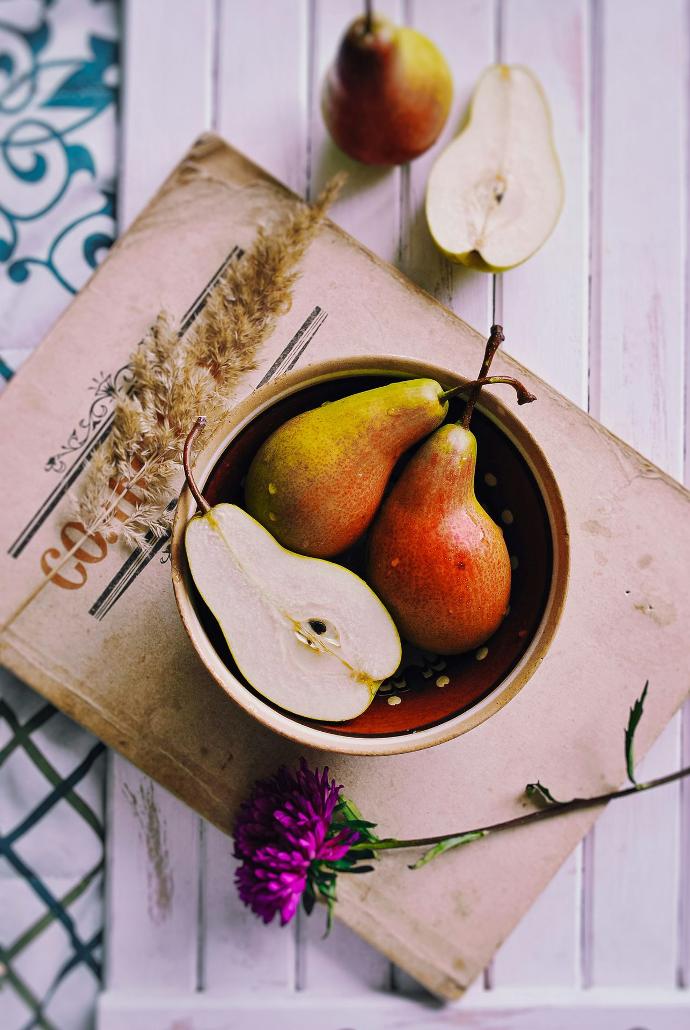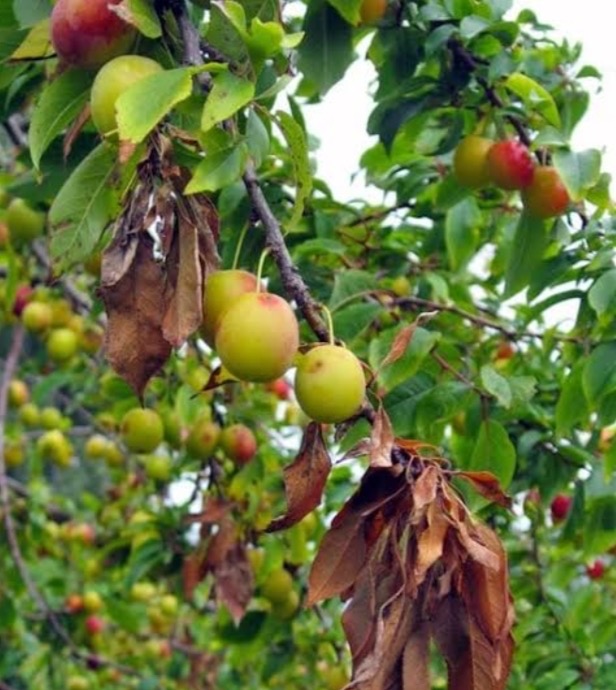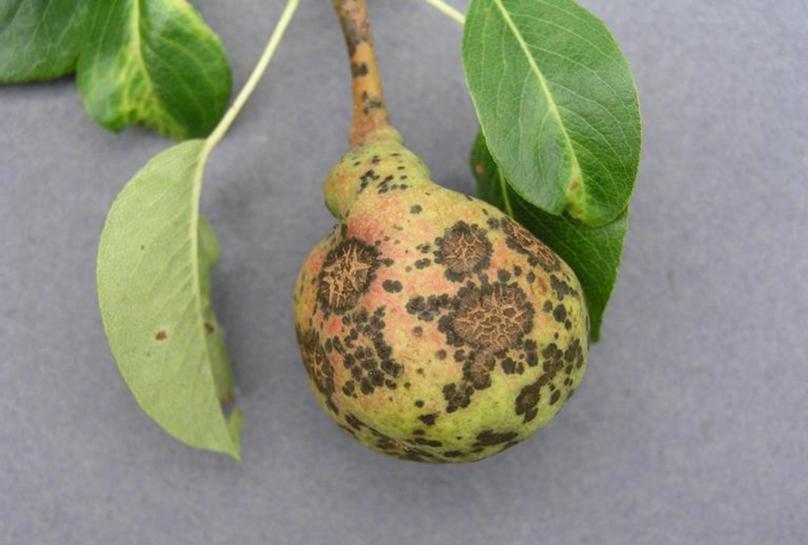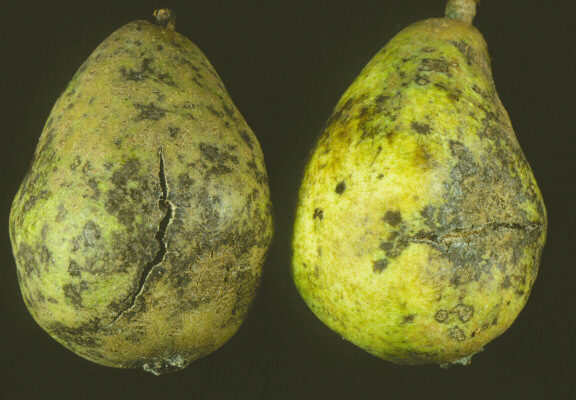Pear Plant
Pear trees, 15-25 feet tall in Zones 4-9, exhibit moderate growth and thrive in well-drained soil under full sun. They produce delectable, edible pears.

Habit
Tree
Height
15-25 ft
Growth
Moderate
Soil
Well Drained
Shade
Full Sun
Moisture
Moderate
Edible
Yes
Medicinal
No
Suggested Grow Media or Potting Mix ?
50% loamy soil, 30% compost, 20% sand
Suggested Fertigation/Fertilizers
Fertilize every 6 weeks with a balanced, slow-release fertilizer.
Common Diseases and Remedies
fire blight , scab , leaf spot , sooty blotch
shoots , flowers and fruits wilt , blacken and die , affected leaves become twisted or puckered , circular spots on their upper surface.
remove infected plant debris , avoid heavy pruning or excess application of nitrogen fertiliser
HEALTH BENEFITS
- Rich in fiber, aiding digestion and promoting gut health.
- Contains antioxidants that support heart health.
- High in vitamin C, improving immunity.
- Helps regulate blood sugar due to its low glycemic index.
What Is An Pear Tree?
Pear (genus Pyrus) is a genus of about 20-45 species of trees and shrubs in the family Rosaceae (Rosaceae), including pears (Pyrus). Pear is one of the most important fruit trees in the world and grows in both hemispheres of temperate countries. Most fruits are eaten fresh or canned. Pear is a fruit produced and used all over the world, grown on trees and harvested from late summer to autumn. Pear trees and shrubs are a species of the genus Pyrus of the Rosaceae family and bear the fruits of the same name. A few pears are valued for their fruit and juice, while others are cultivated trees.

What Are The Different Types Of Pear Plants?
1. Bartlett Pear
The Bartlett Pear Tree is a classic. The pears it produces are large and yellow in colour, with a sweet taste and rich aroma. The harvest season for these pear trees is also longer than that of many other fruit trees; You can enjoy this delicious fruit from July to September.
2. Baldwin Pear
Another good choice for beginners is the Baldwin Pear Tree. These pears are not as large or numerous as Bartlett pears, but they grow well in cold regions, even in USDA zone 5. They also grow quickly, allowing you to enjoy your first harvest of fruit in less than two years.
3. Asian Pear
If you are looking for another type of pear, consider the Asian Pear Tree. These trees produce the largest pears in the world. They are juicy, sweet, crunchy and have a texture that is loved by many.
4. Kieffer Pear
If you want a richly fruited and delicious pear tree, you would like to visit the Kieffer pear trees for sale in our store. Because of their productivity and excellent taste, these pears have been grown all over Europe for centuries. They're juicy but not crunchy, making them perfect for desserts like pies, tarts, pies, or stir-fries.
5. Pineapple Tree
If you want something sweet and unusual, consider planting a Pineapple Tree. These pears are often canned because they are delicious in jams, jellies, and preserves. This pear tree produces sweet fruit that tastes like pineapple, adding another layer of flavour to your favourite baked goods.

How to care for Pear Plants ?
1. Location
Plant your pear tree in a sunny location with well-drained soil. Make sure there is enough space between trees to allow good air circulation. Water regularly, especially during dry periods, and mulch around the base to retain moisture. Prune regularly to shape the tree, remove dead wood and improve air flow. Fertilize in spring and monitor for pests and diseases to address problems immediately. Regular care will help your pear tree thrive and produce healthy fruit.
2. Sunshine
Caring for the 'Sunshine' pear tree requires constant watering, good soil and adequate sunlight. Prune annually during dormancy to maintain the tree's shape and remove dead wood. Apply a balanced fertilizer in spring and mulch around the base to retain moisture. Watch for pests and diseases and deal with them immediately. Check soil moisture regularly and adjust water.
3. Soil
To care for your fruit tree soil, make sure the soil is well-drained and rich in organic matter. Mulch regularly to retain moisture, control weeds and provide nutrients. For optimal growth of your pear tree, measure the pH of the soil and adjust as necessary. Apply a balanced fertilizer in spring and watch for signs of nutrient deficiencies. Water regularly and deeply, especially during the dry season, and avoid overwatering. Check for diseases and infections regularly and solve all problems in time. Consider adding compost each year to increase soil fertility.
4. Hydration
Water your pear tree thoroughly and regularly, especially during drought periods. Provide approximately 1-1.5 inches of water each week from rain or hand watering. Use mulch around the base to retain moisture and reduce weeds. Do not overwater as the pear tree is prone to root rot. Monitor soil moisture and adjust water according to the weather.

5. Nourishment
To care for the fruit tree, provide well-drained soil, water regularly and use balanced fertilizer in spring. Use mulch around the base to retain moisture and reduce weeds. Prune appropriately and remove dead/diseased branches each year. Monitor for pests and diseases and treat appropriately if necessary.
6. Issues
To care for your pear tree, pay attention to proper irrigation, fertilization and pruning. Watch out for pests and diseases. Water deeply and regularly, especially during the dry season. Use a balanced fertilizer in spring. Prune trees annually in late winter to remove dead or crowded branches. Watch out for pests like aphids or diseases like fire blight; If found, fix it immediately. Regular care supports the healthy growth and fruit production of your pear tree.
What are the Benefits of Pear Plant ?
Pear trees provide many benefits, such as producing delicious and healthy fruits, enhancing the beauty of the landscape, providing shade, supporting local ecosystems by attracting pollinators, and contributing to climate change by sequestering carbon. Contribute to a sustainable environment. In addition, some pear tree varieties are resistant to diseases, making them less demanding on gardeners.

FAQs About Growing Pear Plants
1. How to care for a pear tree, consider these tips ?
Prune regularly to remove dead or diseased branches and create a tree better exposed to sunlight . Keep water on hand, especially during drought. Deep watering is necessary to encourage deep root growth . Use mulch around tree roots to retain moisture, reduce weeds and control soil temperature . Beware of pests and diseases. Use organic or chemical control as necessary, following appropriate instructions . Harvest pears when they are ripe but still firm. Make sure there is no bruising or deterioration . If your tree produces a lot of fruit, consider supporting it to prevent branches from breaking . Ensure trees receive at least 6 hours of sunlight per day to support fruit production . Be sure to tailor these practices to your particular fruit tree and local growing conditions.
2. What are some popular varieties of pear trees ?
Some popular varieties of pear trees include Bartlett, Anjou, Bosc, Comice and Seckel. Each has its own unique taste, texture and best use; so it's worth exploring the different types to find your favourite.
3. Can I grow a pear tree indoors ?
Growing a pear tree indoors can be difficult due to their size and specific sunlight and space needs. However, you may want to consider dwarf or small pear tree varieties that are better for indoor growing. Make sure they get enough sunlight, suitable soil and proper water. Remember that even dwarf trees may need larger containers and supporting branches as they grow.
4. What are the diseases and pests of fruit trees?
Pests include pear psyllids, aphids and codling moths, while diseases such as fire blight, pear scab and powdery mildew can also affect them. Proper care, regular maintenance and prompt intervention can help solve these problems in pear trees.
5. How to propagate pear trees from seeds and cuttings ?
Seed Propagation: Collect seeds from ripe fruit . Wash the seeds and let them dry for a few days . Sow the seeds in a pot with well-drained soil or directly into the ground . Keep the soil moist at all times . It takes several weeks to several months to germinate. Propagation by Cuttings: Use semi-hardwood cuttings from healthy pear trees during the dormant period (autumn to early spring) , Cut 6-8 inch (15-20 cm) sections, making sure there are at least two balls in each section , Dip the insert in hormones to stimulate root growth , Plant cuttings in a mixture of sand and potting soil , Keep the soil moist at all times and provide indirect sunlight . Once roots have formed, transfer the cuttings to a permanent location . Please note that success rates may vary and careful attention and patience are essential during the breeding process.


